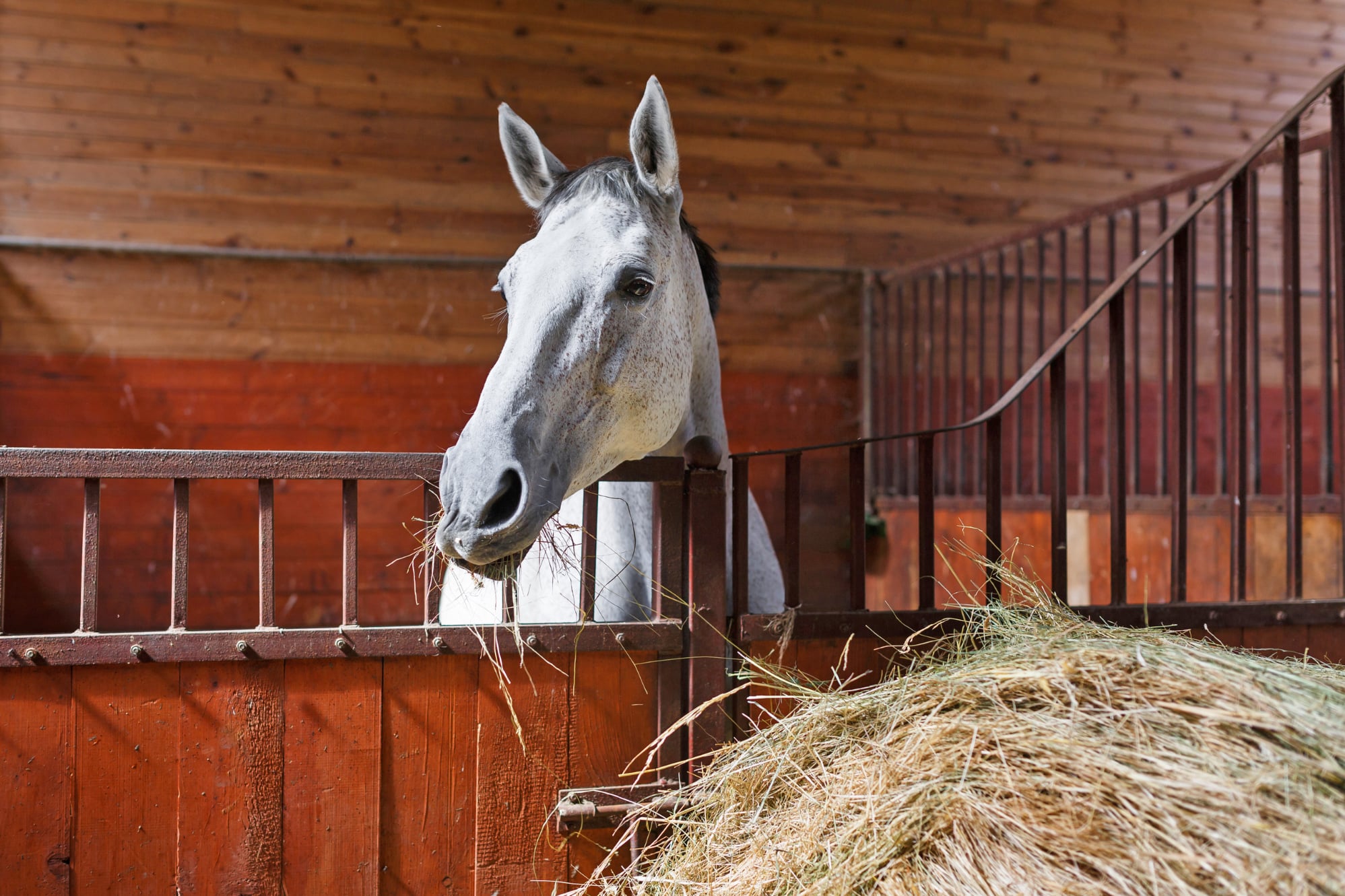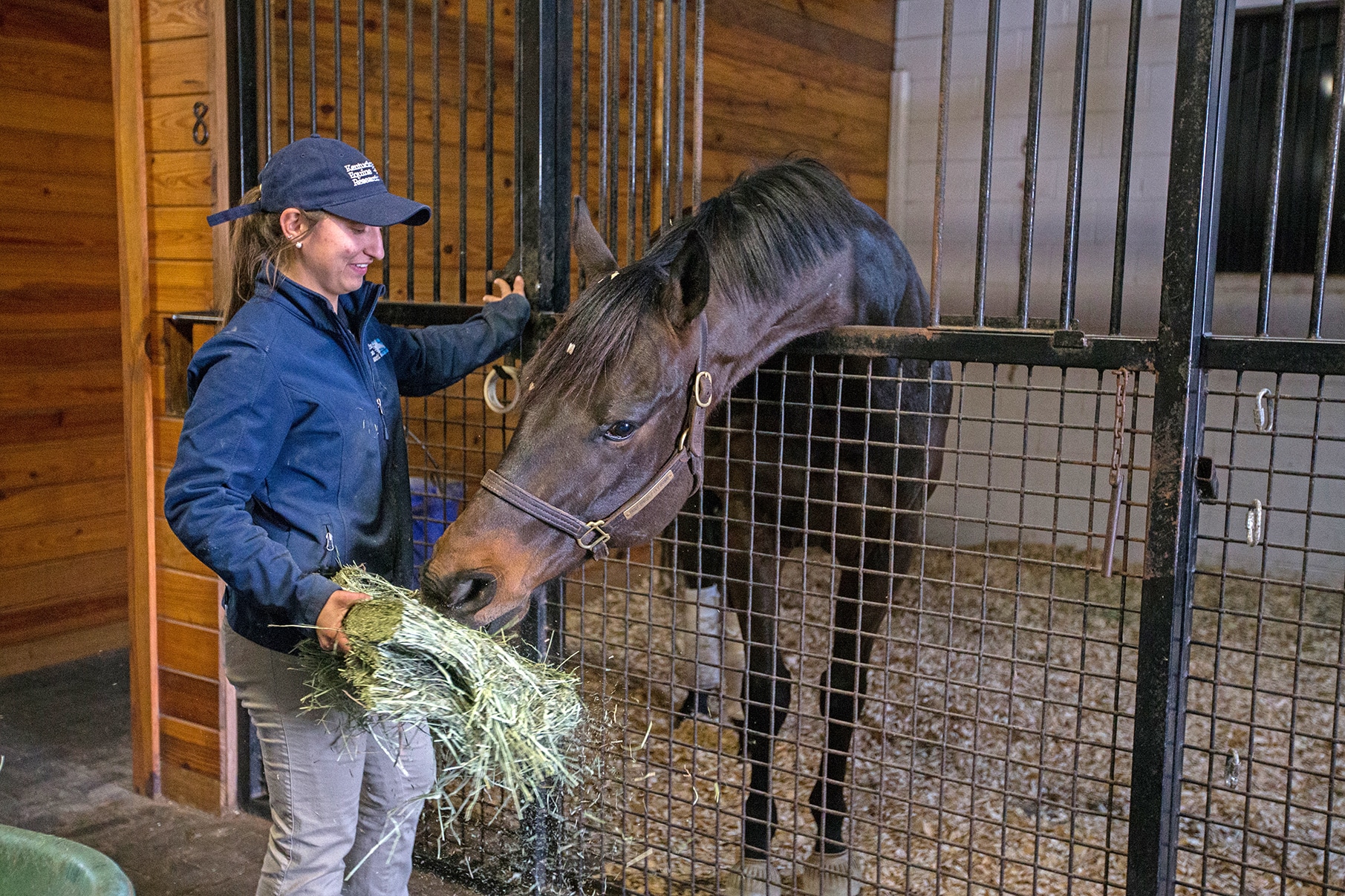
How much do you feed your horse?
Equine nutritionists often ask owners how much they feed their horses – an important question, but the answers can sometimes be vague. DAVID NASH explains.
How many times have you been asked about your horse’s ration and found yourself saying ‘they get a scoop of this, a cup of that, and a pinch of this’? Although many owners describe their horses’ diet in this way, there are significant disadvantages to measuring the amount of your horse’s feed in scoops rather than by weight.
Why weigh?
To determine dietary requirements, your horse’s characteristics should first be considered. These characteristics include age, breed, workload, metabolism, and weight. For example, for optimum digestive health each horse requires at least 1% of their body weight in forage every day, which would be at least 5kg for a 500kg horse.
If you have a horse who is restricted from pasture or has access to very little pasture and you are looking to substitute hay as a forage source, it is important to know how much hay they are receiving by weight (not biscuits) in order to establish whether it meets the 1% of body weight guideline.
When looking at fortified feeds, experienced equine nutritionists have formulated these in accordance with the characteristics of certain classes of horses, including their weight. Based on the formulations, they then recommend a minimum amount of the feed that each type of horse requires to meet their specific nutrient requirements.
Therefore, by weighing feeds you not only know exactly how much your horse is getting daily, but also whether your horse is receiving a balanced diet and meeting their requirements for forage, as well as the nutrients that are important for achieving optimum health, development, and performance.
Weighing feed leads to peace of mind from knowing that you are meeting your horse’s nutritional requirements, and by determining how much of each feed is needed, costs can often be reduced. For example, when a fortified feed is fed at the correct daily amount, the necessity for expensive vitamin and mineral supplements is decreased. If you find you are not feeding the correct amount of a specific fortified feed, I would suggest changing to one designed to deliver adequate nutrition at the rate that you are feeding.

Weight vs volume
In any given feed room, you are likely to come across a wide variety of measuring utensils. Open scoops, dippers, ice cream containers, tins, jars, and bowls are commonly used to convey feed to the trough, and each may hold a different volume of feed.
Equine nutrition consultants often hear from horse owners that they use a 1.0kg scoop. Due to different feeds having different densities, the size of the scoop is hardly likely to be an accurate form of measurement when it comes to weight. Although a scoop of chaff has the same volume as a scoop of pellets or muesli (textured feed), the varying densities of these feeds means that their weigh is very different. For example, a two litre scoop of a pelleted feed may weigh up to 1.2kg, whereas that same scoop of lucerne chaff will weigh much less.
Weighing methods
Feeds can be weighed accurately and conveniently using common types of scales. A hook scale, like those used for weighing fish or luggage, can easily be used to weigh hay or haylage by hanging the hay net or hay bag on the scale. If you’re not using a net or bag, then a bundle of hay can be tied with twine and then hung from the scale.
Feeds can be weighed in a similar manner using an empty pail or bag as a receptacle to hang from the scale. Simply fill your scoop with feed or grain and empty it into the bag before hanging the bag on the scale. In this way, you can determine the weight of all feedstuffs in each of the scoops you normally use. Be sure to take into account the weight of the bag, pail, or net by weighing it first and subtracting that amount from the final reading, or if you’re using electronic scales, make use of the tare function if one is available.
If a flat platform scale is your device of choice, then weighing feeds and cereals can easily be accomplished by using either a scoop or a pail. First, weigh your scoop or pail and make a note its weight (or press the tare button on the scales if they are electronic). Then, fill the scoop with feed and weigh again or empty it into the pail already on the scale to weigh the contents. For electronic scales with a tare function, the weight displayed should be the weight of only the feed contained in the scoop or pail. For other scales, you may have to manually subtract the weight of the container from the combined weight of the feed and container.

In order to weigh hay on a platform scale, you may need a larger platform. A piece of rigid cardboard or wood may work well for this. Be sure to zero the scale or note the weight of the platform before placing the hay on it. Then, simply balance the portion of hay or haylage you wish to measure on the platform and note the weight displayed. Again, depending on whether or not the scale is electronic, the amount displayed will be the weight of the forage, or the forage and platform combined.
Hay and feed shouldn’t require weighing each time you feed your horse. You can simply estimate how many sections of hay your horse requires daily by calculating the average weight of a section from each batch of hay you get. Feed amounts can be determined by knowing the approximate weight of a scoop of each of the foodstuffs in your horse’s diet.
Pasture intake
This is an interesting one, as determining pasture intake takes into account many variables, such as the size of the paddock, quality and quantity of pasture, the demeanour of horse, and the turnout time. If they have 24 hour free access to pasture, horses will generally graze for around 65% of the day and consume 2-3% of their bodyweight per day. Having said that, a study was done with ponies who were confined for all but three to four hours per day, and they consumed at rates similar to horses with free access. So, for horses with weight or metabolic issues it is wise to monitor their condition and change pasture turn out time accordingly, or to use a grazing muzzle to reduce intake. A general guide for intake of pasture is 0.45-0.65kg of dry matter per hour for a mature horse.
By now it should be clear that weight and not volume is the key to knowing what we are feeding our horses. And, additional to a set of scales, we now have several quality nutrition tools (like Microsteed) that can help us calculate whether our horse’s diet is balanced. Alternatively, you could have your horse’s diet prepared by a qualified equine nutritionist, who will take into consideration and calculate everything your horse is consuming.
Using any of the methods suggested above will allow you to assess whether you need to feed more; or to change feed type; or in many cases, to reduce your horse’s intake; or to cut certain supplements out of their diet so that you are not doubling up on nutrients or simply unbalancing their diet.
Visit Kentucky Equine Research and Equinews™ for information on all equine nutrition related topics.


